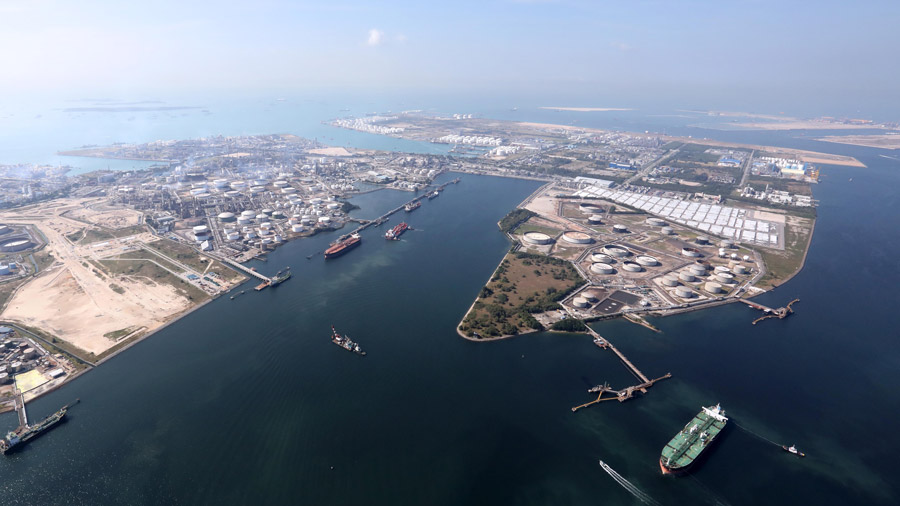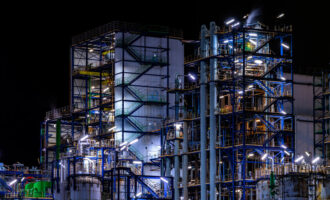
Base oil market “100,000 bpd long” across all grades
A growing trend in the global base oil market is a shift in demand from Group I to Group II. This transition to higher quality base stocks is being encouraged, in part, by engine design changes that command more stringent lubricant regulations, and government mandates on energy efficiency and emissions. Upcoming specifications such as Bharat Stage VI in India, and China 6, are further underpinning Group II as the ‘workhorse’ base oil for the bulk of formulations in the Asia Pacific region.
Predictably, China, India and Indonesia cater for most of the demand in the region. Shaara Blome, business venture executive at ExxonMobil Asia Pacific cited 2018 estimates that 65-70% of base oil demand are in Asia Pacific and nearly a quarter of global requirements are derived from these three populous nations. While growth in China is levelling out and is expected to be more moderate over the upcoming years, the real growth engines will be India and Indonesia, she says.
Assessing the supply and demand balance, the ExxonMobil representative, who began her career with Mobil Oil Corporation in 1991, advises that “in the prompt period of 2019 the base oil market is estimated to be 100,000 barrels per day (bpd) long across all grades and viscosities. In my experience, it is the most oversupplied situation that we’ve been in,” says Blome. Longer-term, we may see some rationalisation in the market, alongside lower utilisation rates, she says.

A consequence of this probable restructuring is that Group I bright stock availability is expected to diminish. Declines in the supply of higher quality Group I bright stock is a concern, says Blome. Other factors are likely to impact bright stock availability. The International Maritime Organisation’s (IMO) 0.5% sulphur cap that comes into force on 1 January 2020 is forcing global supply changes and placing pressure on refiners to produce low sulphur fuel oil. This will be particularly difficult for refineries that lack conversion capacity, says Blome. Such refineries will be forced to buy low sulphur crude, initiating a multi-step process to produce Group I base stocks that is likely to be uncompetitive within the industry.
There is evidence that some shipping companies will continue to use high sulphur fuel post-IMO 2020 – with wide-ranging estimates on the volume of vessels that have been converted with ‘scrubbers’. Based on industry data and our own analysis, we foresee vessels fitted with exhaust gas cleaning systems (EGCS or scrubbers) to represent about 5% of the global fleet in number of vessels or about 10% of the marine fuel mix from a consumption standpoint, in 2020, according to the ExxonMobil representative. With an estimated worldwide fleet of 55,000 vessels, most ships need a fuel solution, says Blome, while also emphasising the importance of a longer term environmentally friendly method rather than simply bridging.
On 2 April 2019, ExxonMobil announced a multi-billion-dollar expansion of its integrated refining and petrochemical complex in Singapore, which is already its largest in the world. Its world-scale Singapore refinery is split across two sites – Jurong Island (Pula Ayer Chawan or PAC) and mainland Jurong – with a capacity of 592,000 bpd. The project, which leverages proprietary technologies, integration and scale, will significantly increase the integrated site’s competitiveness.
The development is focused on the conversion of fuel oil and other residual crude products into higher-value lube base stocks and distillates and will deliver an additional capacity of 48,000 bpd of cleaner fuels with lower-sulphur content — including high-quality IMO 2020 compliant marine fuels. Blome, who is responsible for all non-facilities aspects of the investment, indicates the additional capacity is scheduled to go live in 2023. The arrival is three years late for the IMO 2020 party. ExxonMobil will rely on their global network to address customer requirements for clean fuels in the interim, says Blome.

The project will deliver an additional one million tonnes of Group II base stocks, to significantly increase the earnings potential of its Jurong facility. Planned light neutral and heavy neutral grades will will primarily target distribution in the Asia Pacific region, including India, Southeast Asia and China. The project will also enable the production of a new extra heavy viscosity Group II bright stock, comparable in viscosity to Group I bright stock, that is intended to be marketed globally.
The Group II bright stock will address some of the long-term bright stock shortages and is unique to the industry, says Blome. The product will offer higher saturates and improved low temperature properties, with potential use in industrial applications, and automotive gear oils. “We anticipate that pre-production samples will be available next year, at which point the company will disclose detailed specifications of the product,” the ExxonMobil representative said. ExxonMobil estimates up to a quarter of the one million tonnes additional capacity will be contributed by the new Group II product.
At an uncertain time in our industry adding a further one million tonnes of capacity is a bold move. ExxonMobil seems unphased by rising volumes of electric vehicles with minimal lubricant requirements., The company’s Outlook for Energy anticipates that EVs (BEVs and PHEVs) will account for nearly 30% of new vehicle sales globally by 2040, with hybrid vehicles accounting for roughly another 15% of new car sales. With the global car fleet size projected to grow from about 1.1 billion in 2017 to about 1.9 billion in 2040, the company is banking on global transport-related energy demand growth to continue for the foreseeable future.
The latest Singapore expansion shadows the June 2019 completion of an upgrade to the Singapore refineries EHC™ Group II base stocks – aimed at consolidating the global supply of its high-quality base stocks. Despite growing focus on these higher quality base stocks, Blome confirms that the company remains “committed to the reliable supply of Group I base stock for the long term.”








